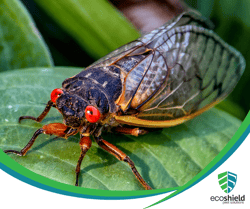 As spring blossoms and the days grow longer, many homeowners might wonder whether the rhythmic chorus of cicadas will be a cause for concern this season. Cicadas, those large, eye-catching insects known for their distinctive and deafening song, emerge in cycles—some annually and others periodically every 13 or 17 years. This blog post delves into what homeowners can expect from cicadas this spring and summer, exploring their life cycles, the actual risks they pose, and effective strategies for protecting your green spaces without harming these fascinating insects.
As spring blossoms and the days grow longer, many homeowners might wonder whether the rhythmic chorus of cicadas will be a cause for concern this season. Cicadas, those large, eye-catching insects known for their distinctive and deafening song, emerge in cycles—some annually and others periodically every 13 or 17 years. This blog post delves into what homeowners can expect from cicadas this spring and summer, exploring their life cycles, the actual risks they pose, and effective strategies for protecting your green spaces without harming these fascinating insects.
What are cicadas?
Cicadas are a family of insects best known for their remarkable appearance and the loud, unmistakable songs produced by males. These insects, belonging to the order Hemiptera, range in size from about 0.75 to 2.25 inches in length. They typically have a stout body, broad head, clear-membrane wings, and large compound eyes, often a striking reddish-orange or greenish in color. The most recognizable feature of cicadas, particularly the males, is their ability to produce loud, vibrating sounds using specialized structures called tymbals on the sides of their abdominal base. This sound can serve as a mating call and a deterrent to predators.
Cicadas prefer environments that are rich in trees, as they spend the majority of their life cycle underground as nymphs, feeding on the sap from tree roots. This dependency on arboreal sap makes wooded or forested areas ideal. However, they are also commonly found in urban and suburban areas with sufficient greenery, making their presence widely noticeable across various landscapes.
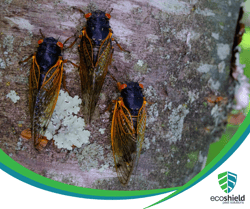 The life cycle of cicadas is fascinating and varies significantly between species. There are roughly 3,000 species of cicadas worldwide, categorized mainly into two types based on their emergence patterns: annual (or "dog-day") cicadas and periodical cicadas. Annual cicadas appear every year in late summer and have a life cycle of 2 to 5 years, although this is staggered, so some emerge each year. Periodical cicadas, on the other hand, are known for their synchronized emergence every 13 or 17 years, depending on the species. All cicadas undergo a life cycle that includes three stages: egg, nymph, and adult.
The life cycle of cicadas is fascinating and varies significantly between species. There are roughly 3,000 species of cicadas worldwide, categorized mainly into two types based on their emergence patterns: annual (or "dog-day") cicadas and periodical cicadas. Annual cicadas appear every year in late summer and have a life cycle of 2 to 5 years, although this is staggered, so some emerge each year. Periodical cicadas, on the other hand, are known for their synchronized emergence every 13 or 17 years, depending on the species. All cicadas undergo a life cycle that includes three stages: egg, nymph, and adult.
Females lay eggs in slits they cut into tree branches. After the eggs hatch, the nymphs fall to the ground and burrow underground. Cicada nymphs spend most of their life cycle—up to 17 years for some species—below the surface. Here, they undergo several molts, growing gradually and feeding on root sap. When they are ready to emerge, which is synchronized among their cohort, they tunnel upwards, exit the soil, and climb a nearby plant or structure. They then molt one final time, shedding their nymphal skin to reveal their adult form. This final molt marks the beginning of their brief adult life, dedicated to reproduction and characterized by the loud choruses of males seeking mates. After mating, the cycle begins anew, with females laying eggs for the next generation.
Are cicadas harmful to people or pets?
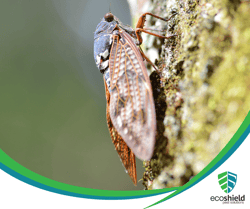 Cicadas are generally not harmful to people or pets. These insects are not venomous, do not bite or sting defensively, and are not known to carry diseases harmful to humans or animals. The primary interaction that cicadas have with humans and pets is through their loud mating calls, which can be a nuisance due to their intensity but pose no physical threat. For the most part, cicadas are benign creatures whose brief adult life is focused entirely on reproduction.
Cicadas are generally not harmful to people or pets. These insects are not venomous, do not bite or sting defensively, and are not known to carry diseases harmful to humans or animals. The primary interaction that cicadas have with humans and pets is through their loud mating calls, which can be a nuisance due to their intensity but pose no physical threat. For the most part, cicadas are benign creatures whose brief adult life is focused entirely on reproduction.
While cicadas themselves are harmless to direct health, their presence in large numbers can occasionally lead to minor issues. For example, pets, particularly curious dogs, may try to eat cicadas. While these insects are not toxic and can be consumed, eating them in large quantities could potentially cause a mild stomach upset in pets. As a general rule, it's a good idea to monitor your pets and prevent them from overindulging in these bugs, primarily to avoid gastrointestinal discomfort.
The biggest concern regarding cicadas, particularly during mass emergences of periodical species, is more about nuisance and less about danger. The noise can be overwhelming, particularly in areas where the insects are densely populated. Additionally, the sheer number of cicadas can be visually off-putting and may cover outdoor areas, including backyards, parks, and patios, which can affect outdoor activities. After the mating season, the death of large numbers of cicadas can lead to a temporary increase in organic debris and a corresponding smell as they decompose, although this is typically a short-lived issue that resolves as part of natural processes.
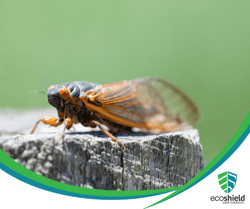 Thus, while cicadas can be a loud and sometimes messy addition to the summer landscape, they do not pose a threat to people or pets. Their emergence is a natural process and, for many, an opportunity to witness a fascinating part of the natural lifecycle. For the most part, humans and pets can coexist with cicadas without concern for health or safety, focusing instead on the unique experience their periodic appearance brings.
Thus, while cicadas can be a loud and sometimes messy addition to the summer landscape, they do not pose a threat to people or pets. Their emergence is a natural process and, for many, an opportunity to witness a fascinating part of the natural lifecycle. For the most part, humans and pets can coexist with cicadas without concern for health or safety, focusing instead on the unique experience their periodic appearance brings.
How do cicadas affect the environment?
Cicadas have a unique relationship with their environment, impacting it in both positive and negative ways. Their life cycle and behaviors play significant ecological roles that are essential to understand.
Positive Impacts:
Cicadas benefit the ecosystem in several ways. First, they serve as an important food source for a variety of wildlife, including birds, mammals, fish, and other insects. Second, the emergence of large numbers of cicadas, especially during periodical events, provides a substantial boost to local food webs, supporting predators and contributing to a healthy, dynamic ecosystem.
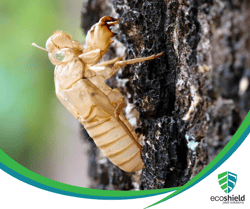 Another positive impact of cicadas is their role in soil aeration and nutrient cycling. The nymphs of cicadas spend many years underground, where their burrowing activities help aerate the soil, improving water infiltration and root growth. When cicadas emerge and die, their bodies decompose and enrich the soil with nutrients. This process enhances soil fertility and benefits plant growth, indirectly supporting other species within the ecosystem.
Another positive impact of cicadas is their role in soil aeration and nutrient cycling. The nymphs of cicadas spend many years underground, where their burrowing activities help aerate the soil, improving water infiltration and root growth. When cicadas emerge and die, their bodies decompose and enrich the soil with nutrients. This process enhances soil fertility and benefits plant growth, indirectly supporting other species within the ecosystem.
Negative Impacts:
Despite these benefits, cicadas can also have some negative effects on the environment, particularly in urban and suburban areas. During egg-laying, female cicadas make slits in the branches of trees to deposit their eggs. This can cause damage to young and small trees, leading to branch breakage or flagging, where parts of branches turn brown and die. While mature trees typically survive with minimal impact, young trees can be severely weakened and may need protective netting in areas expecting large emergences.
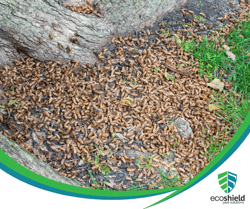 In residential areas, the massive emergence of cicadas can sometimes lead to more nuisance issues than ecological damage. The noise can be overwhelming, and the accumulation of dead cicadas can be unsightly, requiring clean-up efforts. Additionally, the sudden influx of decomposing insect bodies can temporarily affect the smell of the area and attract other scavengers or pests.
In residential areas, the massive emergence of cicadas can sometimes lead to more nuisance issues than ecological damage. The noise can be overwhelming, and the accumulation of dead cicadas can be unsightly, requiring clean-up efforts. Additionally, the sudden influx of decomposing insect bodies can temporarily affect the smell of the area and attract other scavengers or pests.
Overall, cicadas play complex roles in their ecosystems. While they can cause some local damage and nuisance, especially noticeable during mass emergences of periodical cicadas, their overall contributions to ecological health and nutrient cycling are overwhelmingly positive. The periodic swarms of cicadas not only provide a natural spectacle but also remind us of the intricate interconnections within ecosystems and the importance of biodiversity in maintaining ecological balance.
Can I prevent cicadas around my home and property?
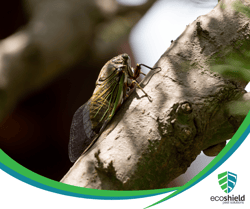 Homeowners anticipating the emergence of cicadas, particularly during large periodical events, can take several steps to mitigate the impact of these insects on their homes and properties. While completely preventing cicadas from appearing is impossible due to their vast numbers and wide geographic spread, certain strategies can help manage their presence and minimize potential damage.
Homeowners anticipating the emergence of cicadas, particularly during large periodical events, can take several steps to mitigate the impact of these insects on their homes and properties. While completely preventing cicadas from appearing is impossible due to their vast numbers and wide geographic spread, certain strategies can help manage their presence and minimize potential damage.
- Protecting Trees and Shrubs: One of the primary concerns for homeowners is the potential damage to young trees and ornamental shrubs, where female cicadas lay their eggs. Wrapping the trunks and branches of vulnerable trees with fine netting is an effective way to prevent cicadas from accessing these areas. The netting should have mesh small enough to keep cicadas out (about 1/4 inch or smaller), and it should be secured around the trunk to prevent cicadas from crawling underneath. This is particularly important for newly planted or young trees, which are more susceptible to damage. Netting should be installed before the cicadas begin to emerge and left in place until all cicada activity has ceased.
- Chemical Repellents: While chemical solutions are available, they are generally not recommended due to their potential impact on the environment and other wildlife. Cicadas are not harmful to humans or animals, and their presence is temporary, so using harsh chemicals to control them is often considered unnecessary and counterproductive.
- Physical Barriers: Aside from netting for trees, homeowners can use physical barriers to keep cicadas off patios, decks, and other outdoor living spaces. For example, setting up a temporary screen or modifying existing screens can help keep cicadas away from particular areas where their noise or mere presence might be particularly unwelcome.
- Garden Maintenance: Maintaining a tidy garden can also help manage the impact of cicadas. After cicadas die, their bodies can accumulate and create a mess. Regularly cleaning up the deceased cicadas can prevent odor and decay, making outdoor spaces more pleasant and reducing the attraction of other pests.
- Timing Outdoor Activities: If homeowners are planning significant landscaping projects or the planting of new trees, it may be wise to schedule these activities to avoid the peak cicada emergence period. Since cicadas are mostly active for a few weeks to a month every 13 or 17 years for periodical species, delaying planting until after the emergence period can protect young plants from being overwhelmed by cicadas.
Ultimately, while it's difficult to completely prevent cicadas from impacting your home and garden during their emergence period, these steps can help manage their presence and reduce potential damage. By planning ahead and using protective measures, homeowners can coexist with cicadas during their brief and infrequent appearances above ground.
Are Cicadas a Cause for Concern?
In conclusion, while cicadas can be a notable presence during their emergence seasons, they are generally not a cause for serious concern among homeowners. These insects are harmless to humans and pets, and the damage they can inflict on young trees is manageable with preventive measures such as netting. Their loud choruses and the sheer number of insects can be overwhelming, but remembering that cicadas provide significant ecological benefits—including enriching the soil and supporting local wildlife—can offer a broader perspective on their brief appearance. By taking simple protective steps and understanding the natural role cicadas play, homeowners can mitigate any inconveniences and appreciate the unique natural phenomenon that cicadas represent.